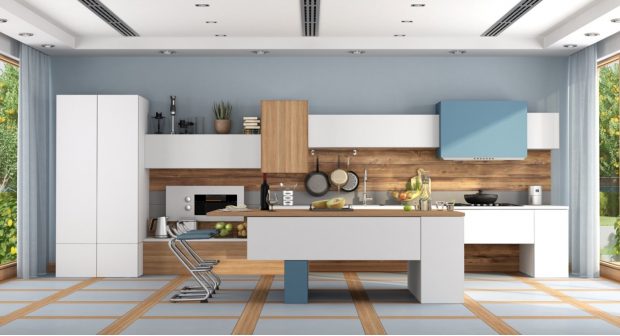The design and layout of an air conditioning system plays a key role in the flow of a house. It influences comfort and helps determine where the best spots are for socialising or relaxing. Although HVAC vents may not be at the top of anyone’s list for design, this simple feature has a long term impact. If heating and cooling is perfected, then everything else will fall into place.

Types of Central AC Vents
There are several useful terms any homeowner should be aware of. The most notable address vents and air conditioning vent covers. Top terms to understand include:
- Supply and Return Vents: Supply vents release hot or cold air into the home, while return vents draw in the air so that it can be conditioned. Return vents are larger in size as more air is required to be drawn in at once.
- Grilles: The grille is the metal covering on top of a vent which directs airflow.
- Registers: Slightly different to a grille, registers are slatted openings which can be adjusted by a lever to restrict or relax, depending on the desired airflow.
Seasonal HVAC Considerations
Catering to all seasons can be a tricky task. As warm air rises, there are times where you want to remove the hot air at the top of a room, and others when the cold air at the bottom has to go.
The return vent draws out the air which will be conditioned. As a result, it has to be in the perfect position. Too close to the supply vent and your fresh cold air will be instantly sucked away.
High/low combination return ducts are the perfect solution. Low registers can be closed so the high return vent draws in warm air during summer, and vice versa for the winter months.
Alternatively, if a room contains just one return vent, a higher location on the wall is recommended. Uncomfortable warm air can be removed in summer when climate control is tougher. Low vents can also easily be covered by couches or furniture and their efficiency negated.
Air Conditioned Comfort
Natural ventilation has long defined how buildings have been designed, yet much of that was lost with the advancement of technology. However, the 21st Century has seen a shift towards natural heating and cooling, and more open spaces at home. This means there is less of a focus on a small space. The goal is to create comfort for a large room with various zones.
While height is crucial for return vent efficiency, AC supply vents require similar tactical nous. They should work with a home’s recreational flow and provide maximum benefit.
Square or round AC vents which direct air evenly should be in the centre of a room for 360 degrees of relaxation. Meanwhile, vents which only send air in one direction should be closer to a wall so there are no large stagnant spots. Or, consider several thin supply ducts throughout a room.
Plan Ahead
When starting from scratch, consider the floorplan and furniture layout. Areas of high use like a family room, rumpus room or kitchen all require consistent climate control. The basement may benefit more from a central vent, while a kitchen would look best with a vent tucked away on the wall. Also look at natural airflow and where windows are located. It’s possible to complement a HVAC system with natural cooling in summer so electricity bills remain low.
And if there is any doubt, consult a local professional. Warmer locations have different requirements to cool ones. Companies like Upside Down understand all weather conditions and can offer further insight into the best spot for vents.
Get the Right Look: Ceiling Vent Covers
When there’s an overall theme to a home, ceiling vent covers can complete the look. Classic or modern, an air conditioning vent cover can be selected so that it stands out with strong features, or blend in as a base colour.
This is when design comes to the forefront of planning. From Victorian era brass metal floor vents to wicker or louvered grilles, there is something for every home.
Ceiling vents can be round or square, depending on whether you want straight lines and defined edges, or a smooth flow. Thin, narrow supply vents also provide a more modern touch that is a step above traditional square ceiling vent covers. Darker colours can blend into feature walls seamlessly, and white is always a classic tone which suits most.
Stick to Practicality over Trends
Forget the air conditioning trends and stick to HVAC practicality. Trends will come and go but heating and cooling is for decades. Ensure a home will be comfortable all year round and maximum benefit can be enjoyed by all.




